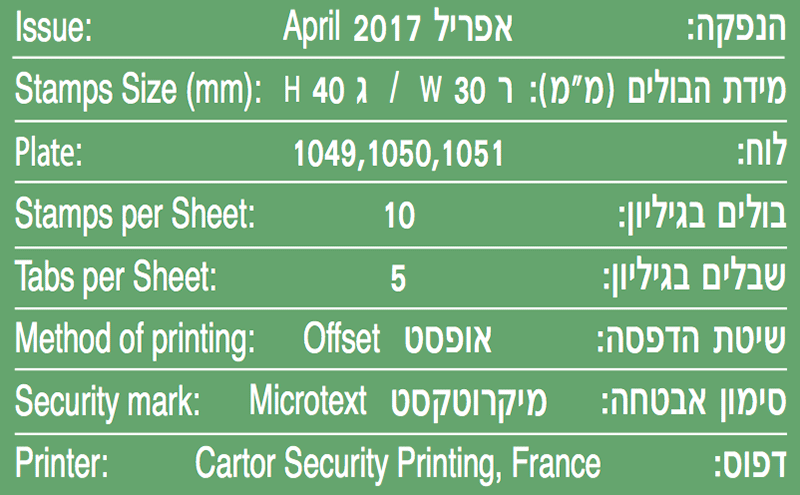50 Years of Settling the Golan, Jordan Valley, Judea and Samaria 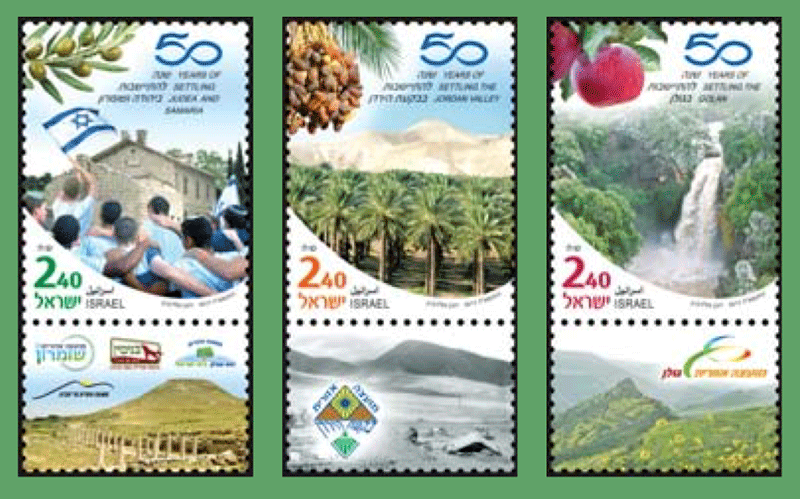 Issue date April 4, 2017
Issue date April 4, 2017
Since its earliest days, settling the land was at the forefront of Zionist activity in Eretz Israel and great efforts were made to acquire land and build communities throughout the country. The moshavot (agricultural colonies) established by immigrants of the First Aliyah, the kibbutzim and moshavim (communal agricultural communities) originating from the British Mandate period and the urban towns founded in the early years after the establishment of the State of Israel in 1948 – are all examples of links in the golden chain of the momentum of settlement which has existed continuously throughout the period of the Jewish people’s return to Eretz Israel.
Immediately following the Six Day War in 1967, new towns were established in portions of the country that had recently come under Israeli rule. A group of young people from kibbutzim in the Galilee established a new community in the Golan Heights in July 1967, which subsequently developed into Kibbutz Merom Golan; and children of the original settlers of Gush Etzion, which was destroyed during the War of Independence in 1948, reestablished the town of Kfar Etzion in September 1967. Some three months after the Six 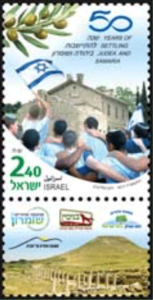 Day War, the Israeli government led by Prime Minister Levi Eshkol adopted a plan to establish towns in the Golan Heights and the Jordan Valley, and within a decade dozens of new communities were established in these areas. The momentum of establishing new settlements in Judea and Samaria grew in the mid-1970’s, and increased significantly from 1977 after the new government headed by Prime Minister Menachem Begin took office.
Day War, the Israeli government led by Prime Minister Levi Eshkol adopted a plan to establish towns in the Golan Heights and the Jordan Valley, and within a decade dozens of new communities were established in these areas. The momentum of establishing new settlements in Judea and Samaria grew in the mid-1970’s, and increased significantly from 1977 after the new government headed by Prime Minister Menachem Begin took office.
Due to the lack of agricultural land and water in the mountainous areas of Judea and Samaria, a new model of rural communities called “community settlements” was established. This model was based mainly on production industries, tourism and services as well as employment outside the community. Urban towns were also established in the new areas, some of which eventually became cities.
Agriculture developed in fields that were advantageous in the unique climate and soil of each area. Apples are grown very successfully in the elevated area, the Golan Heights. The hot dry climate of the Jordan Valley was crucial to the development of the date-growing industry and the traditional vineyards and olive groves of the mountainous areas of Judea and Samaria have been rejuvenated.
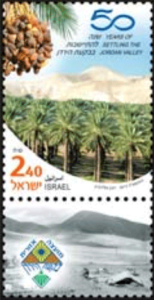 Remnants of ancient Jewish towns have been unearthed in archeological excavations near many of the new communities in the Golan Heights, Jordan Valley and Judea and Samaria. These communities renew and strengthen the historical bond between the Jewish people and its historic homeland.
Remnants of ancient Jewish towns have been unearthed in archeological excavations near many of the new communities in the Golan Heights, Jordan Valley and Judea and Samaria. These communities renew and strengthen the historical bond between the Jewish people and its historic homeland.
Based on a publication by the Settlement Department and Division of the Jewish Agency for Israel and World Zionist Organization.
Description of the Stamps and the First Day Covers
Golan
Stamp: apples against the background of the Sa’ar River. Tab: the ancient city of Gamla (Rina Nagila, courtesy of the Golan Regional Council).
FDC: Kibbutz Merom Golan (photo from the early 1970’s, courtesy of Tova Mendel, head of the Golan Archive, current photo – Albatross).
Jordan Valley
Stamp: date grove against the background of the Samaria Mountains (Penny Elimelech, courtesy of the Jordan Valley Regional Council).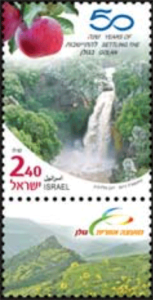
Tab: Alexandrion (“Sartaba”) (IDF Archive).
FDC: Mehola (older photo — Ariel, courtesy of the Jordan Valley Regional Council Archive, current photo — Penny Elimelech).
Judea and Samaria
Stamp: olive branch against the background of a group of youths at the Sebastia train station (train station — National Photo Collection, youths — Kobi (Yaakov) Dagan, olive branch — Shutterstock).
Tab: Herodion (www.goisrael.com).
FDC: Kfar Etzion (photo dated April 30, 1947 — National Photo Collection, current photo courtesy of Moria Halamish). 